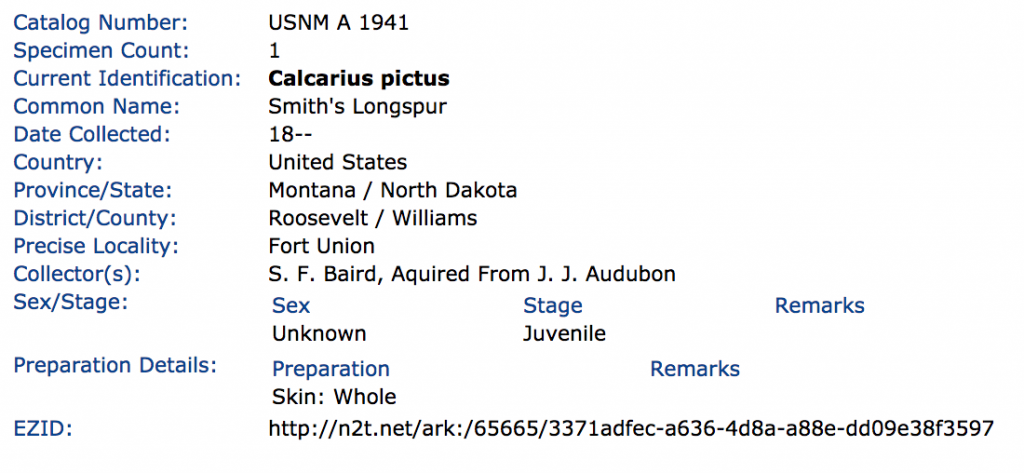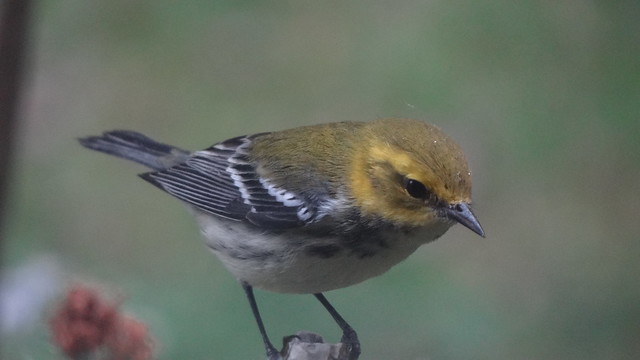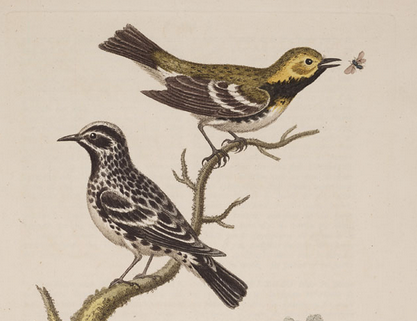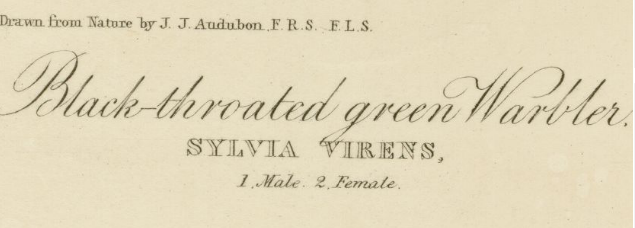There are but few things I miss from those long-ago years in Urbana, and this clown-faced calcariid is one of them.
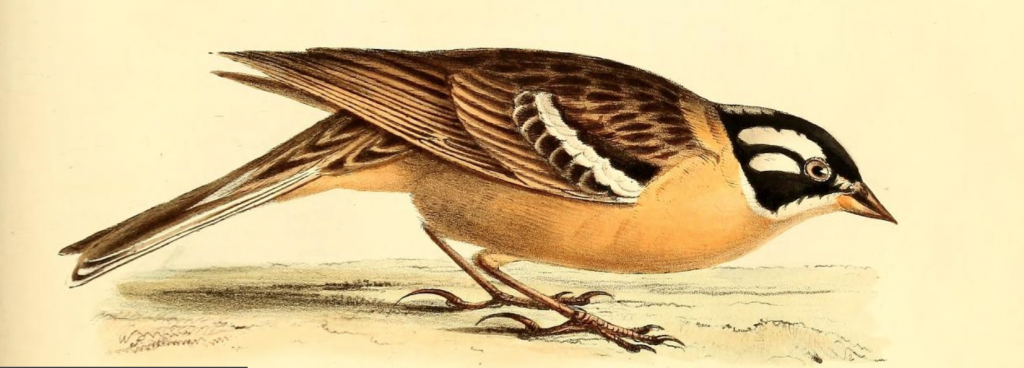
Like clockwork, end of March every year we would get out and walk the foxtail-choked stubble of last year’s corn, and there they were — the first northbound Smith longspurs of the spring.

There was an extra piquancy to finding these birds in our neighborhood, as the first individuals ever met with by western scientists in the US had been found not all that far away, in southern Illinois, in April 1843, as Audubon’s last expedition was preparing to leave St. Louis for the upper Missouri.
Edward Harris and John G. Bell, Audubon’s New Jersey patron and his hired preparator, respectively, had left the old man in the city and set off for the prairies to the northeast, where they busied themselves for two weeks exploring and collecting. Bell reported that they had found an unfamiliar bird “very abundant,”
generally in large flocks, and when on the ground began at once to scatter and divide themselves, rendering it difficult for us to shoot more than two at one shot; they run very nimbly….
Harris and Bell were up to the challenge, though, and eventually secured “several specimens,” two of which made their way into the Smithsonian collections (first, it seems, as personal gifts from Audubon to Spencer Baird) and one of which apparently remains there (it is impossible to reconcile the locality and age information provided in the electronic specimen record with what Baird says of the skin).
Audubon did not recognize the little dead finches, either, and he published them as representing a new species, the Smith lark-bunting, Plectrophanes Smithii. The name honored his “good friend Gideon B. Smith, Esq., M.D.,” the entrepreneurial entomologist whom Audubon had visited in Baltimore at the start of his 1843 voyage.
The practiced eye will have noticed in that last paragraph that while Smith is still commemorated in the bird’s official English name, he goes unmentioned in the current scientific name, Calcarius pictus (“painted spur-bird“). This not uncommon circumstance — have a look at the hawk and the sparrow named for Edward Harris, to take two well-known examples — typically arises when a competing scientific name is found to have priority only after the English name has attained currency; it’s no surprise in North American ornithology that Audubon, a powerful voice and a not always careful bibliographer, is so often prominent in these stories.
In the case of the longspur, it is entirely understandable that Audubon and his companions in St. Louis overlooked the fact that the species had been published and named more than a decade earlier. William Swainson’s handsome lithograph of a single male shot on the banks of the Saskatchewan River in April 1827 (the specimen once in the collections of the Zoological Society of London, but now apparently lost) was completed in 1829; the formal description and name, Emberiza picta, were published in the volume dated 1831 of the Fauna boreali-americana.
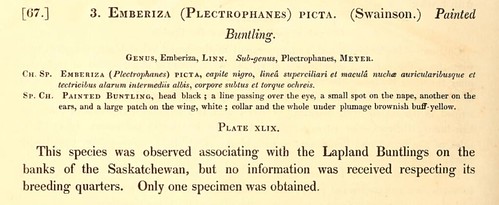
Swainson’s lithograph, the first image above, shows the bird in all its springtime glory, but Bell and Harris were less fortunate. Though these longspurs can be quite bright indeed as they pass through Illinois, Audubon’s plate, the second above, shows that his companions encountered, or at least shot, only females or males still early in their pre-alternate molt. Though Audubon’s use of the name “lark-bunting” suggests that he may have recognized the novum as somehow longspurrish, there is really no reason to expect that he, Harris, and Bell should have recognized their smudgy brown birds as identical to the dapper badger-faced creature from Carlton House.
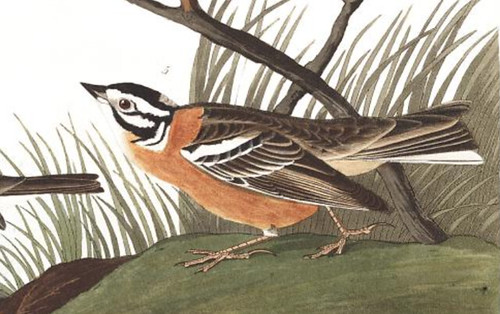
And that in spite of the fact that Audubon himself had experience, in the field and in the hand, with Swainson’s “painted buntling.” (Extra credit, by the way, if without benefit of google you can identify the tail in Audubon’s image.) To prepare his plate for the Birds of America, Audubon borrowed the original Saskatchewan skin of “this handsome species” from the Zoological Society. Examining the specimen in the 1830s, he was reminded of something he had seen himself on the wintertime prairies:
That the Painted Bunting at times retires far southward, probably accompanying the Lapland Longspur, is a fact for which I can vouch, having seen one on the shore of the Mississippi in December 1820, which however I missed on wing after having viewed it about two minutes, as it lay flat on the ground.
Though is not entirely unheard of for male Smith longspurs to appear in breeding aspect in early winter, Audubon was certainly fortunate to witness the phenomenon — and to remember it so clearly nearly two decades later.
The phantom from Illinois survived in the scientific literature for the better part of a decade, listed on Audubon’s authority as distinct from the Swainsonian picta by no less than George Robert Gray, Jean Cabanis and Charles Bonaparte.
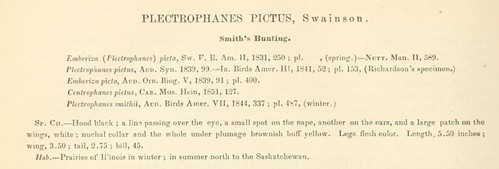
Sometime in the 1850s, it was somehow determined that Audubon’s Illinois bird — the longspur he named for Smith — was in fact simply the “immaturely marked” plumage of Swainson’s painted buntling. Whatever debate and discussion may have taken place seems to have gone on behind the published scenes, but the ever so slight broadening of the specimen record available to Baird, Brewer, and Ridgway may have helped: the two Robert Kennicott skins (neither of which I can find in an NMNH search) bracket the migration of the species through the Mississippi Valley, and I assume (dangerous thing, that) that they provided the points of triangulation to finally confirm the identity of the earlier Illinois specimens.

It was Baird and his collaborators who struck the nomenclatural compromise by recognizing the priority of Swainson’s picta/us but retaining Audubon’s vernacular tribute to Gideon Smith. We should continue to think of the good doctor whenever we see this species, but I hope that next time we run into one — on the breeding grounds or on migration through a chilly midwestern field — we try to remember, too, that it took years of effort by some of the century’s most important ornithologists to figure out that two species were in fact only one.



